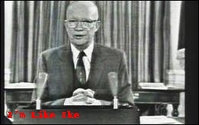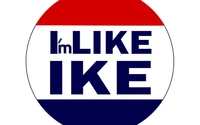
For the record, you can say you heard the term here first. I can find no reference of it being used
before, and Google has no query results for that exact term. What does it mean? Like the “military-industrial complex” I’m drawing from, it’s the idea that there now exists an incestuous and self-perpetuating monetary and policy relationship
between the advertising and financial industries that are simultaneously influencing each other. It’s part of the underlying thesis behind RTM Daily and how we cover the rapidly
evolving programmatic marketplace, especially exchanges and trading that emulate, if not exactly mimic, Wall Street’s.
But there are some obvious similarities, and from what I have been able to see in my inbox the past several days, quite a bit of overlap. It’s the last part
that inspired this post. But before I get to that, let me remind you about some elements of the thesis.
1 - Madison Avenue “media buyers” are restructuring as “media audience traders,” and planners and strategists are effectively becoming “portfolio
managers.”
2 - Madison Avenue’s programmatic exchanges are the equivalent of Wall
Street’s high-speed trading systems.
3 - Media inventories are becoming analogous to Wall
Street’s “equities” and “commodities.”
4 - Advertisers are becoming
“institutional investors.”
5 - (Some) agency trading desks are becoming like “hedge
funds.”
I could go on, but if you’ve been following my and Tyler Loechner’s posts
these past few months, you get the drift.
I’m not going to say the analogy completely holds
water, but I will say that not a day goes by that I don’t think it’s more true, not less. So let me give you some “real-time” examples of the “complex,” as I
learned about them, from just the last few days.
Dec. 10, 4:15 pm: Received a pitch from a PR person
touting that Wall Street hedge funds will be the “next great” ad category on Madison Avenue. The pitch was based on a report in Fortune magazine that Topturn Capital became the first hedge fund to advertise to the general public
since the Securities and Exchange Commission lifted its 80-year-old ban on “general solicitation” on Sept. 23rd. “Still in at a nascient stage, hedge fund advertising has the
potential to become a significant source of revenue for advertising and marketing firms,” she gushed, with many on Madison Avenue hoping it goes straight from her press release to God’s
ears.
Dec. 11, 11:01 am: Forbes breaks a story that Madison Avenue’s primary data processing
system, Mediaocean, plans to begin trading on Wall Street’s public markets in 2014. (This one is ironic for a number of reasons, but especially since Mediaocean has sometimes fancied itself as a
Wall Street-like exchange, though it in reality, it is just a big data cruncher and facilitator.
Dec.
11, 7:57 pm: Received an equity research report from Doug Anmuth at JPMorgan analyzing the significance of Facebook being added to the S&P 500 and S&P 100 stock indexes. (S&P made the
announcement after the stock market closed that Facebook will replace The Williams Cos. on its 100 index and Terradyne on its 500 index.)
Sound complex? Not really. Both industries trade stuff. Wall Street trades money, or financial instruments worth money. Madison Avenue trades something brands
hope can be converted into money: people’s attention. The fact that they’re starting to look more like each other makes eminent sense. Or maybe, that’s just my complex.
 President Dwight D. Eisenhower made the concept of an "industrial complex" famous in his farewell television speech.
President Dwight D. Eisenhower made the concept of an "industrial complex" famous in his farewell television speech.